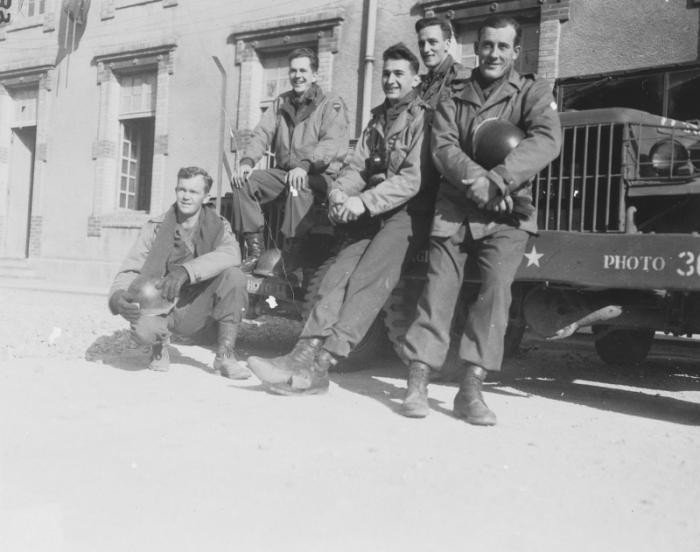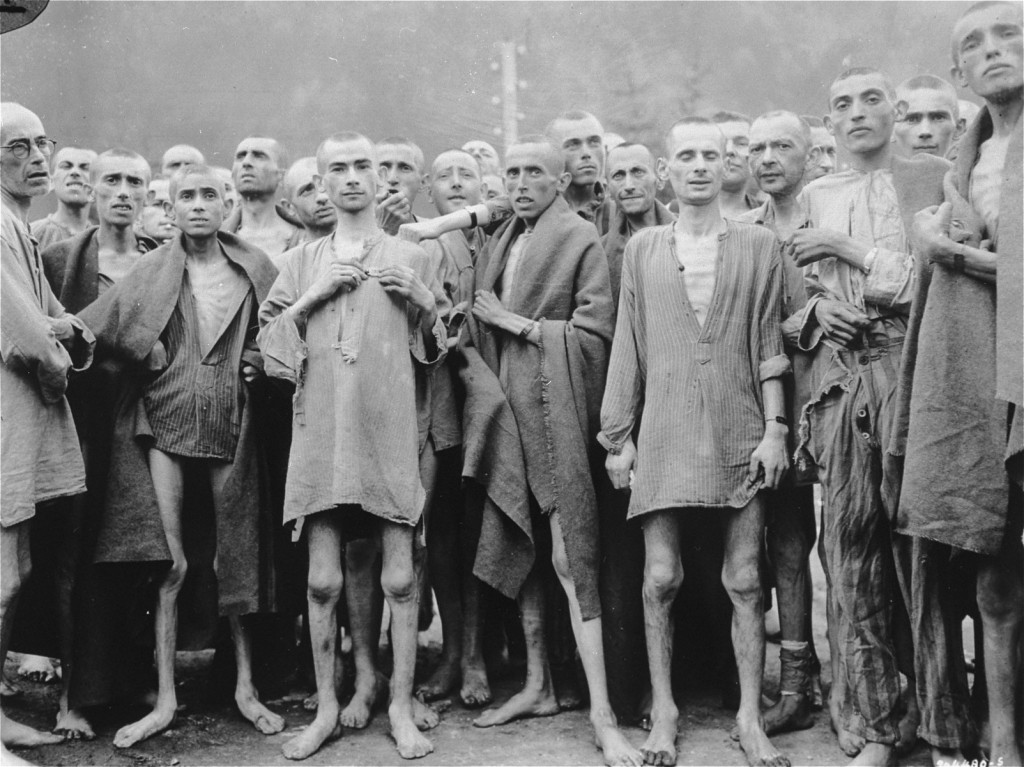
Documenting Liberation: Arnold E. Samuelson
Arnold E. Samuelson was among the first Allied photographers in the Army Signal Corps. During his time in Europe, he documented Allied military campaigns in France and Belgium. He took some of the best known photographs of Holocaust survivors upon the liberation of the camps. 2020 marked the 75th anniversary of the liberation of concentration camps and the end of Nazi tyranny in Europe.

Before America's entry into World War II, Arnold E. Samuelson (1917–2002) worked for the Eastman Kodak Company in Portland, Oregon. In May 1942, he was inducted into the US Army. He served in the Army Air Corps and later joined the Signal Corps in January 1943.
Three months after D-Day (June 6, 1944), Samuelson came ashore on the Normandy beaches with the 167th Signal Corps Company and began documenting the Allied military campaigns in France and Belgium. He saw service in the Battle of the Bulge (December 1944), and, in 1945, he was given command of the 123rd Combat Unit. That unit consisted of two motion picture cameramen, John O'Brian and Edward Urban, and two still photographers, J Malan Heslop and Walter McDonald.
Samuelson's group served initially with the 9th Armored Division, advancing as far as Leipzig, then was attached to the 80th Infantry Division as it moved southward to Bavaria and Austria. During this campaign, Samuelson's crew was the first group of Allied photographers to document Nazi crimes and the plight of concentration camp prisoners at Lenzing and Ebensee, two subcamps of the Mauthausen concentration camp in Austria.

Critical Thinking Questions
- Why do military forces document their actions? Investigate Nazi documentation of actions by their military.
- Learn about documentation of genocidal events since the Holocaust. How was this evidence used, if at all?

